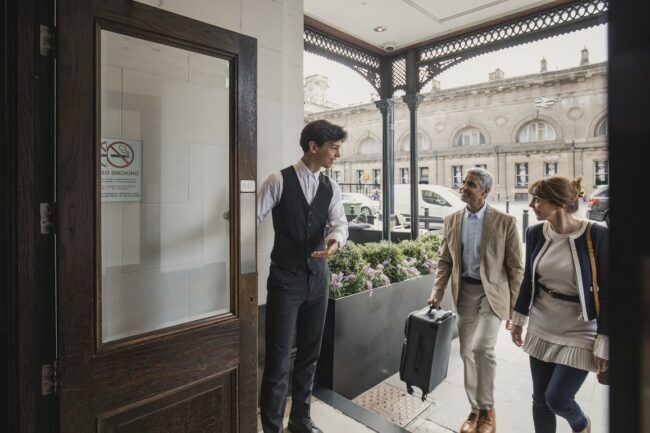Stay connected
Subscribe to our Inside WEX blog and follow us on social media for the insider view on everything WEX, from payments innovation to what it means to be a WEXer.

Getting the right product or service to the right customer at the right time isn’t a new idea, but it has become the mantra for today’s focus on personalization. It makes sense. Technology makes it easier to get more personal than ever now and customers expect it–thanks to the likes of Amazon and Netflix.
Convenience Versus Privacy
Many travelers appreciate their favorite hotel brand knowing what type of room they prefer or their usual airline predicting they’d like a window seat or anticipating dietary preferences. Loyal customers expect a company to anticipate their needs.
Of course, not all travelers feel that way. An important aspect of personalization is appreciating the difference between offering great service and the creepy factor that feels like an invasion of privacy. Adding to the challenge is what’s seen as creepy varies by individual, with younger consumer being much more accepting, as well as varying regulation around the world impacting how personal data can be captured and used.
Show Me You Know Me
The WEX 2019 U.S. Travel Trends Report found 45% of Millennials and 37% of Gen Z U.S. travelers are very or extremely likely to book a flight after receiving a personalized notification.
Other studies have found:
While consumers are game for personalization, many travel companies aren’t there yet. Only one-third of travel executives surveyed for the Skift and Adobe’s 2018 Digital Transformation Report rated their personalization efforts as a four or five on a scale of one to five. Hospitalitytech.com reports that nearly 90% of hospitality brands may be collecting email preferences, but less than 50% are taking advantage of that info by customizing emails.
Use What You Have
Marketers know that personalization strengthens a customer’s connection to a brand and, ultimately, leads them to make a purchase. Yet, forbes.com cites a survey by Ascend2 that found nearly two-thirds of digital marketers feel personalization is difficult—very difficult. In fact, respondents felt it was more challenging than content marketing, SEO or email marketing.
How are the travel companies engaged in personalization making it a reality? Any way they can–high-tech, low-tech, simple or complex—and not all options require a major investment in technology.
Skift and Adobe’s 2018 Digital Transformation Report touts the value of gathering a variety of data. The key is to use both first-party data, such as hotel websites, and third-party data, like Facebook.
The same report found that marketers obtain data from social media (60%), email (58%), digital analytics (52%) and transactional data (47%) in order to create more robust traveler profiles.
Keep The Personal In Personalization
Travel brands of all sizes can find a way to personalize their marketing and their interactions with their customers. Whether an organization has complex systems to gather volumes of data or simply gathers information from face-to-face conversations, it needs to be used thoughtfully. As traveltripper.com explains, it’s critical that personalization happens throughout the customer journey, “from inspiring a traveler’s initial choice to delivering a great on-property experience.”
The advice from Susan Grossman, Executive Vice President, Mastercard Services: “Brands must carefully navigate the fine line between respecting personal privacy and leveraging insights to surprise and delight customers. Get the combination right, and you will have a winning personalization strategy that offers more value and memorable experiences to your customers.”
Subscribe to our Inside WEX blog and follow us on social media for the insider view on everything WEX, from payments innovation to what it means to be a WEXer.